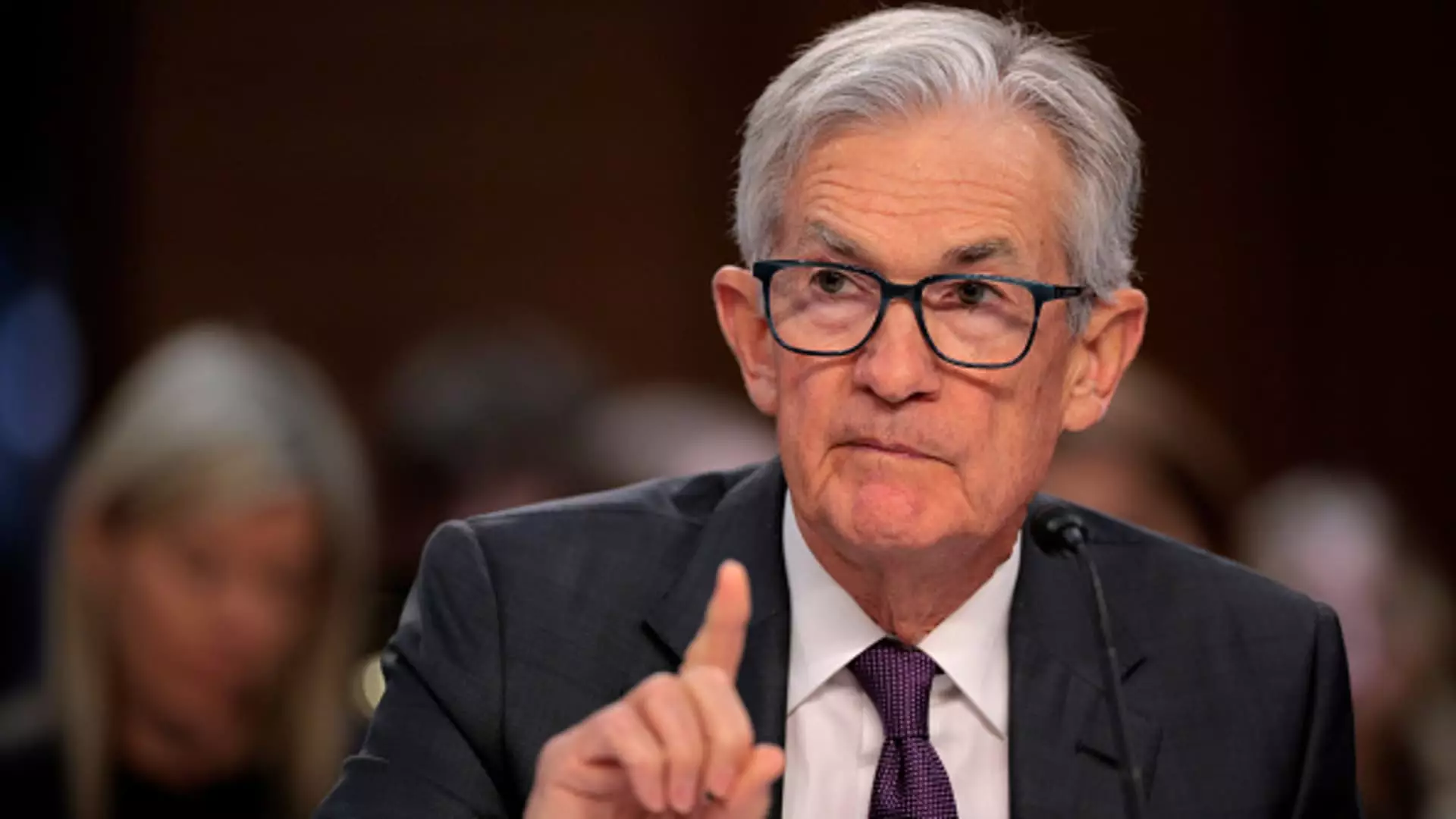In an era marked by fluctuating economic indicators and shifting political landscapes, the Federal Reserve (Fed) finds itself grappling with the intricate interplay between monetary policy and external factors such as trade tariffs. The Fed’s recent deliberations highlight its commitment to stability, yet there looms significant uncertainty primarily attributed to tariffs implemented under the Trump administration. This article endeavors to unravel the nuances surrounding the Fed’s decision-making process and the potential ramifications of inflationary pressures and trade policies.
In January, the Federal Open Market Committee (FOMC) reached a consensus to maintain its policy rate, pausing after three substantial rate cuts amounting to a total decline of one percentage point during 2024. This decision underscores the Fed’s cautious approach as it monitors economic performance while recognizing that the current stance is considerably less restrictive than prior to the cuts. By holding rates steady, the committee aims to provide itself with the necessary bandwidth to assess the evolving economic landscape—including labor market conditions and inflationary trends—before committing to further rate adjustments.
The members voiced a substantial consensus that the existing policy framework requires more time to evaluate its impacts. With inflation hovering above the Fed’s desired 2% target, there is an understanding that while the economy may be nearing maximum employment, further progress is essential on the inflation front before any alterations to the federal funds rate occur. This cautious posture reveals a bank wary of the precarious balance between stimulating growth and controlling inflation.
Compounding these challenges, inflation fears have been exacerbated by the implementation of tariffs under President Trump. In light of recent threats to escalate tariffs on a range of commodities—including automobiles, pharmaceuticals, and semiconductors—the FOMC has articulated its worries regarding the potential inflationary pressures these tariffs may unleash. The prevailing sentiment reflects apprehension that tariffs may lead to companies passing on increased costs to consumers, further complicating the Fed’s mission to maintain price stability.
Moreover, the possibility of tariffs acting as a catalyst for persistent inflation generates additional complexity. Policymakers currently face the dilemma of determining whether heightened tariffs represent isolated price shocks or signify the onset of a more enduring inflationary trend. This distinction is crucial, as the Fed’s response trajectory will hinge on the nature of the inflation these tariffs produce—one-time surges could be met with tolerance, whereas sustained inflation likely necessitates preemptive demand-side interventions.
Despite tariff-related anxieties, FOMC participants expressed a diversity of sentiments regarding the overall economic outlook. There exists a noted optimism stemming from expectations of easing government regulations and potential shifts in tax policies that could invigorate economic activity. While persistent trade tensions challenge this optimism, the Fed remains poised to address evolving fiscal realities and their implications for both employment and inflation metrics.
Both employment and inflation lie at the heart of the Fed’s dual mandate, but the emergence of Trump’s fiscal strategies adds a layer of complexity to its decision-making framework. Fed Chair Jerome Powell has generally refrained from speculating on the impact of tariffs, instead advocating a measured approach reliant on empirical evidence. However, discussions among other officials reveal apprehension that trade policies could delay necessary rate cuts, as they work to grasp the overall economic implications of these trade dynamics.
As the Federal Reserve navigates this multifaceted economic landscape, it faces the dual challenge of fostering growth while keeping inflation at bay. The interplay between aggressive tariff policies and traditional monetary levers demands a delicate balancing act—one that requires astute timing and a thorough understanding of potential ripple effects.
While market anticipations suggest further rate cuts could materialize by mid-year, the path is clouded by uncertainty stemming from trade policies and global economic trends. As Fed officials weigh these complexities, maintaining flexibility in their approach will be crucial in safeguarding economic stability amidst the challenges they confront.


Leave a Reply